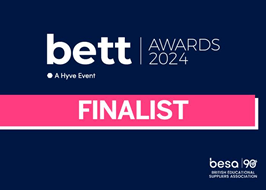Getting started
Interdependent learning approach
Do you lead programming from the front of the class? Showing all the students at the same time how a "for" loop works? Have you considered that a one-size-fits-all approach might not be getting the best from your students? When we lead learning from the front, not every student is following. Some are already lost and some never needed the explanation because they are ready to move on already. Therefore, only a small number of students are benefitting from this approach. Wouldn't it be better if every student received the tuition and "live coding" examples when they are ready?
Welcome to TIME 2 CODE. The BEST way to learn to code because it's built upon all the leading pedagogies.
This scheme is designed for students to make progress at their own pace within a structured framework. With an interdependent approach, instead of the teacher leading the learning from the front of the class and dictating which programs students should all study at the same time, with TIME 2 CODE students can learn for themselves using videos and other resources; knowing when to ask for help and when to find solutions on their own. They ask teachers to review their work before continuing to the next program, so there is always opportunity for extra teaching and Q&A, but it's at an individual level when they need it.
With this approach, no student is held back, and no student is left behind. Those students who need less support can make greater progress while teachers support those students who need more help. This means that each student may be working on a different program to their peers. That's differentiation in action!
How to deliver this scheme
Simply give this website to students and allow them to work through it. Everything they need is included. The teacher then becomes a facilitator. Monitoring progress, delivering timely feedback and teaching only to those who need it.
Levels
- Show students how the course is structured into levels that contain learning programs and practice programs with assessment points.
Learning programs
- These are all numbered 0x-01, 0x-02 or 0x-03 under the title, "Programs to learn new techniques".
- Show students the structure of the three learning programs in each level: Try, Investigate, Make and Evaluate (TIME).
- Start all students at level 1 and allow them to work on their own through the three learning programs. They should use headphones to watch the videos and be encouraged to look at these again if they get stuck later.
- Show students how to get more help using the knowledge organiser that contains explanations of commands, their syntax and flowcharts to help with logic thinking.
Practice programs
- These are all numbered 0x-04 to 0x-09 under the tite, "Programs to practice your new skills".
- Show students the structure of a practice program.
- Decide how many stars you want students to achieve in a level. Typically this would be four or six. Students do not need to complete every practice program.
- See more details in the guide to differentiation.
- Allow students to self-select one, two or three star programs depending on how confident they feel.
- As students are working, the teacher provides support to individual students becoming a facilitator and assessor rather than the teacher.
- Try adopting a "three-before-me" approach to support. I.e. ask your neighbour for help, then ask a more confident student in the class for help, only then ask your teacher for help.
- Encourage students to use the programming guides to help with a list of commands and their syntax.
- Encourage students to use the flowcharts to help with logic thinking, but only when necessary.
- Encourage students to use Parsons problems with the flowcharts only if they are really stuck. If they become over-reliant on Parsons they need to take a step back and try some easier programs.
- Encourage students to tackle lower star programs if they are struggling and higher star programs if they can take more challenge.
- Importantly, foster an expectation of interdependent learning and a growth mindset.
- When students complete a program, review it with them using the oral feedback framework and mark it off on a tracking sheet before starting the next program.
- Use the programs from Mission Encodeable for more support, demonstrations and fun as time permits.
- Allow students to tackle assessment point programs when they are ready.
Moving on
- Students should only continue to the next program and especially the next level when they feel secure in the knowledge.
- If necessary, students should undertake more practice or Mission Encodeable programs first.
- There is a certificate at the end of each level that students can print and teachers can sign to verify them. These are great for handing out in class, in assemblies or pinning to a progress board in the classroom. A teacher can pin a new certificate on top of an existing one for each student to show the progress of all the students in the class. Many young people find this motivating and it gives them a sense of urgency if they fall behind.
Maintaining pace
- Be mindful that an interdependent approach can lead to students falling behind the schedule or not completing the scheme. Set dated checkpoints for each set of three levels as a minimum and monitor pace carefully.
- If you find you are running out of time, reduce the expectation from six to four, or four to three stars. It is important for GCSE examinations that students complete levels 1-9 by the end of the course.
